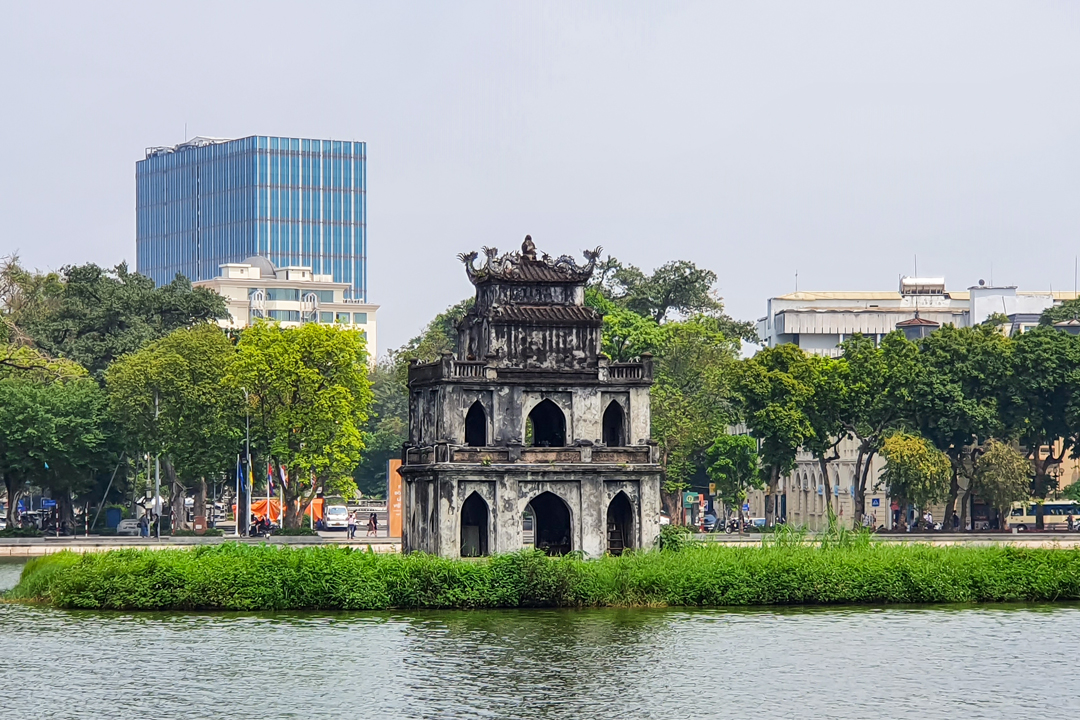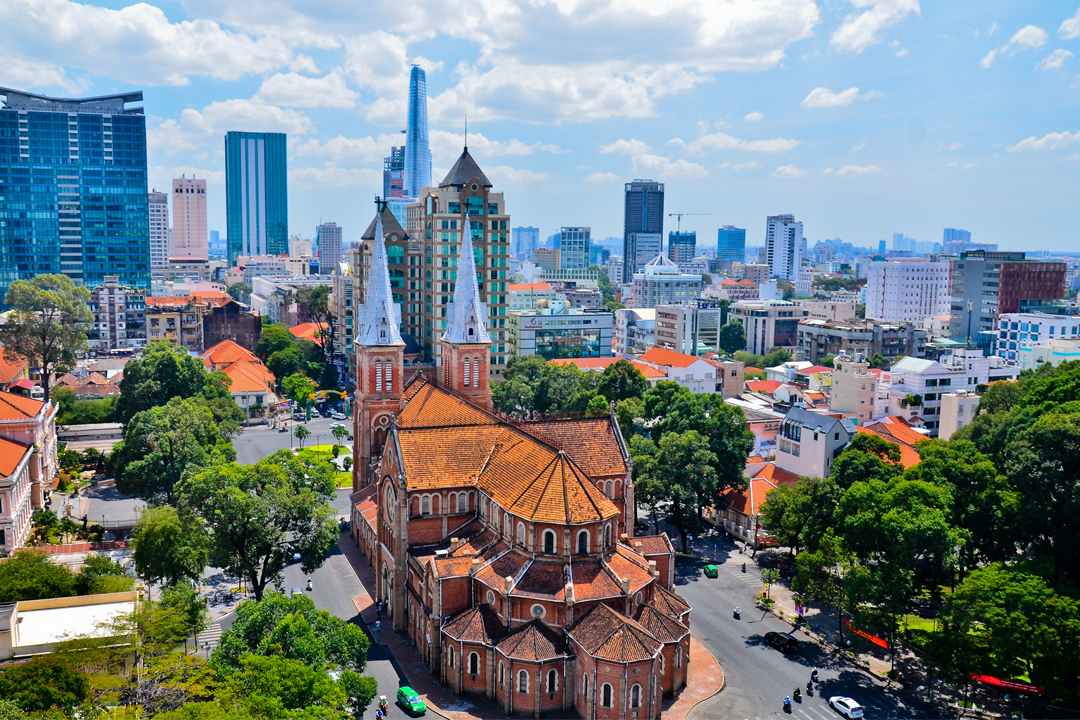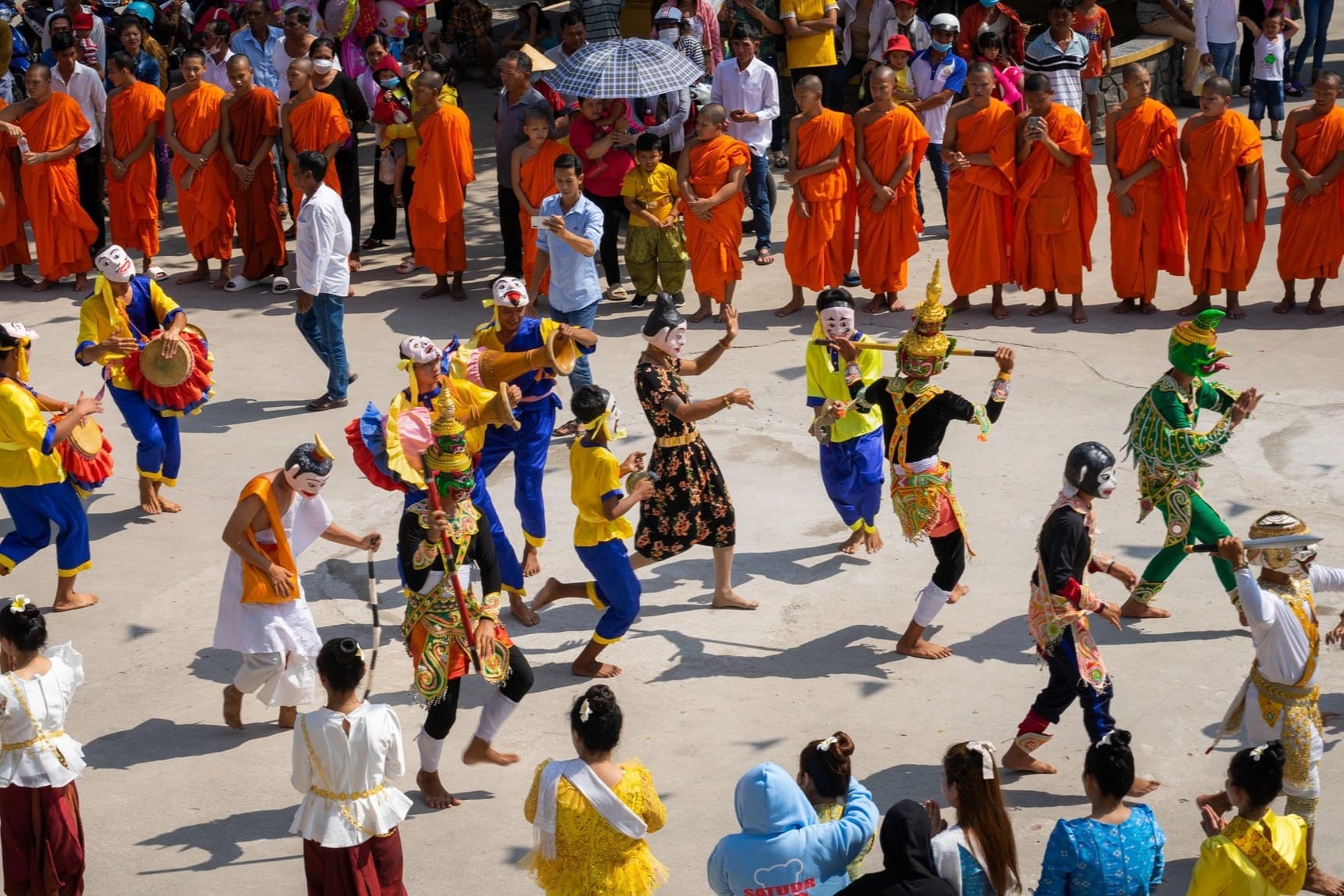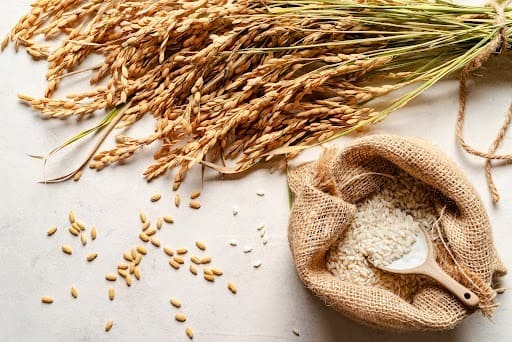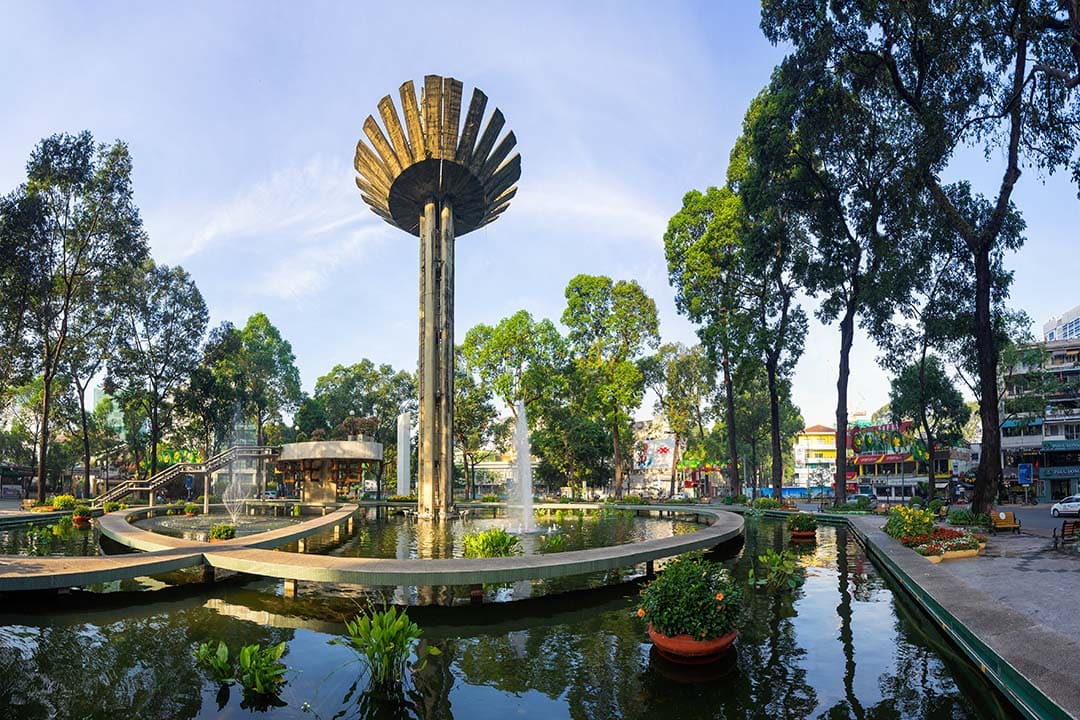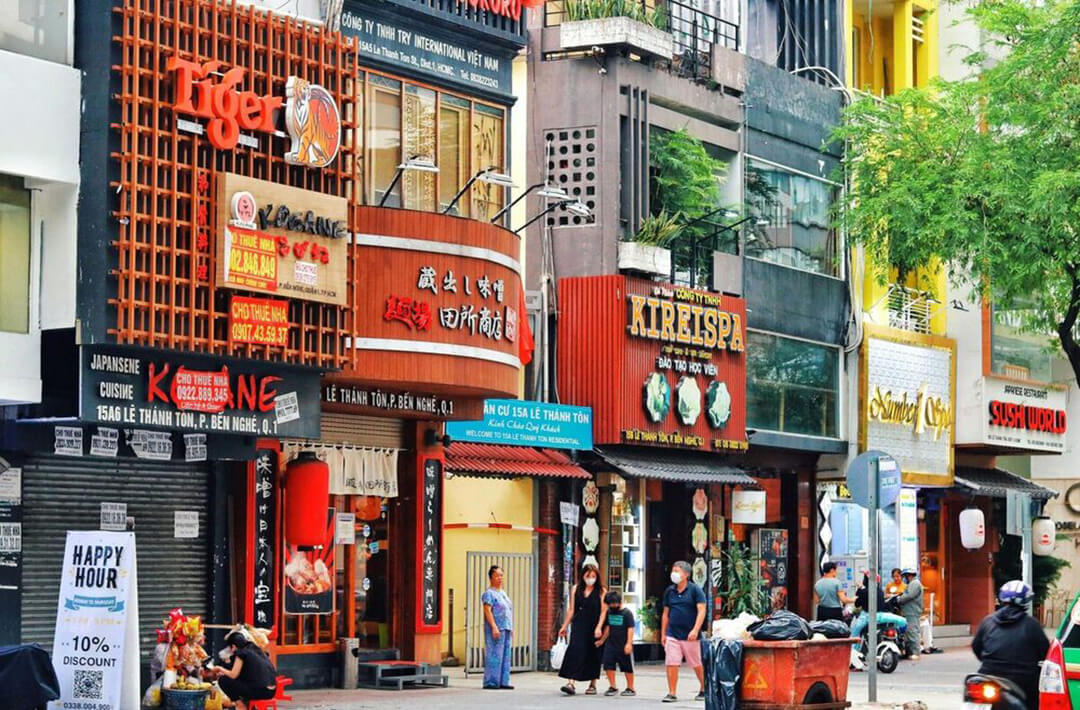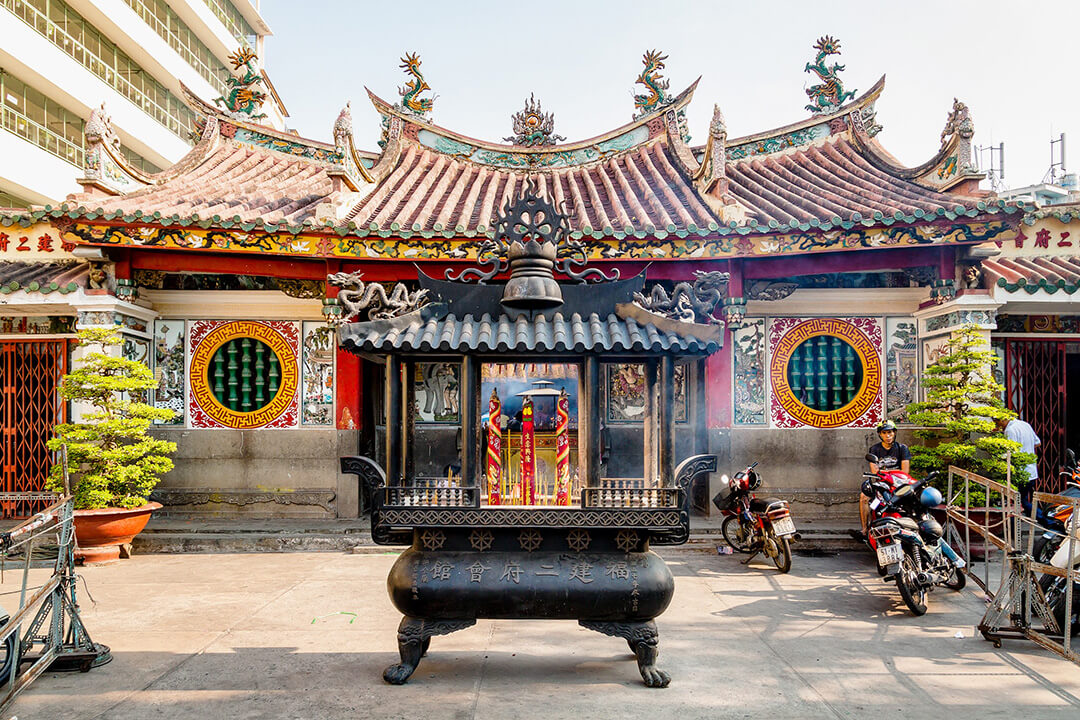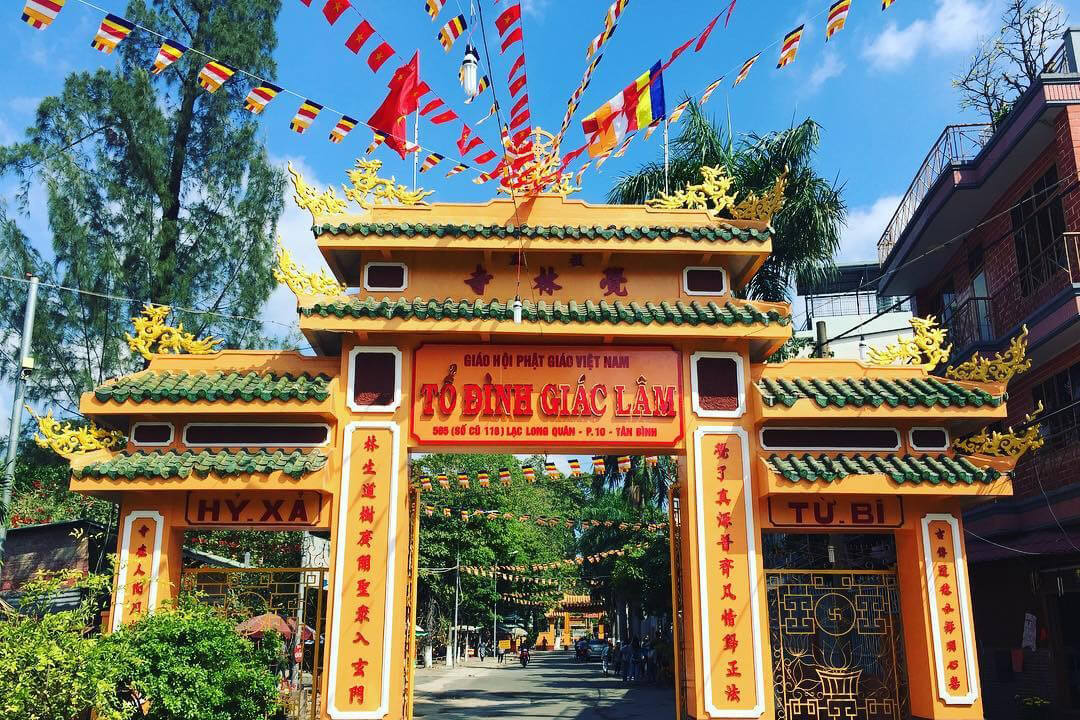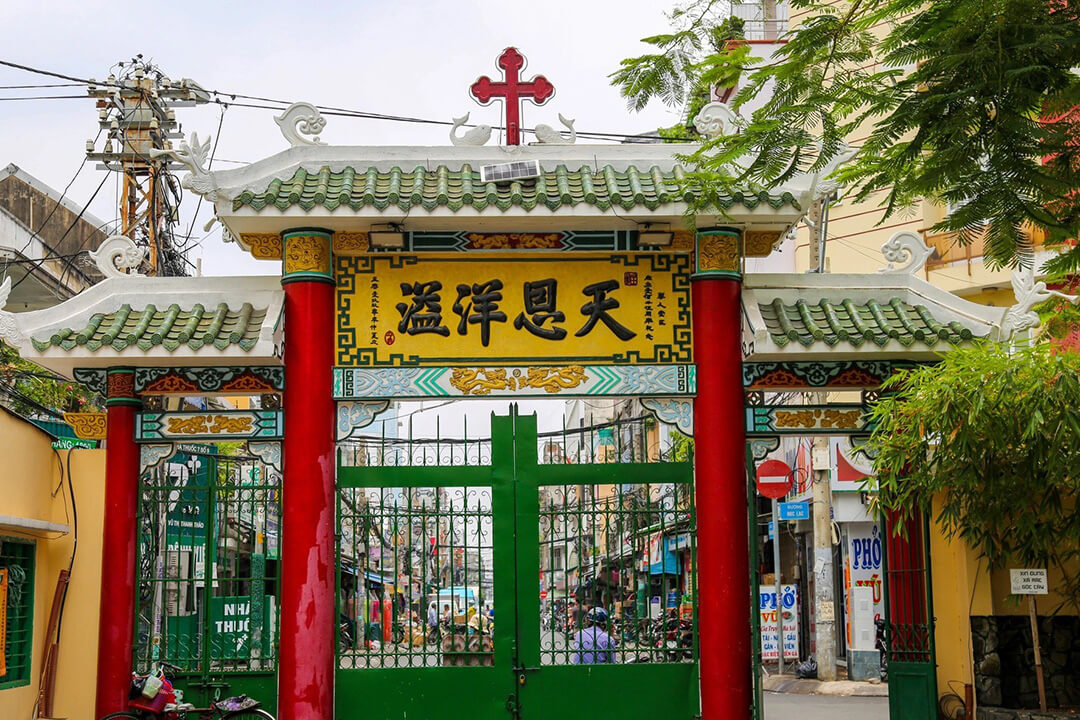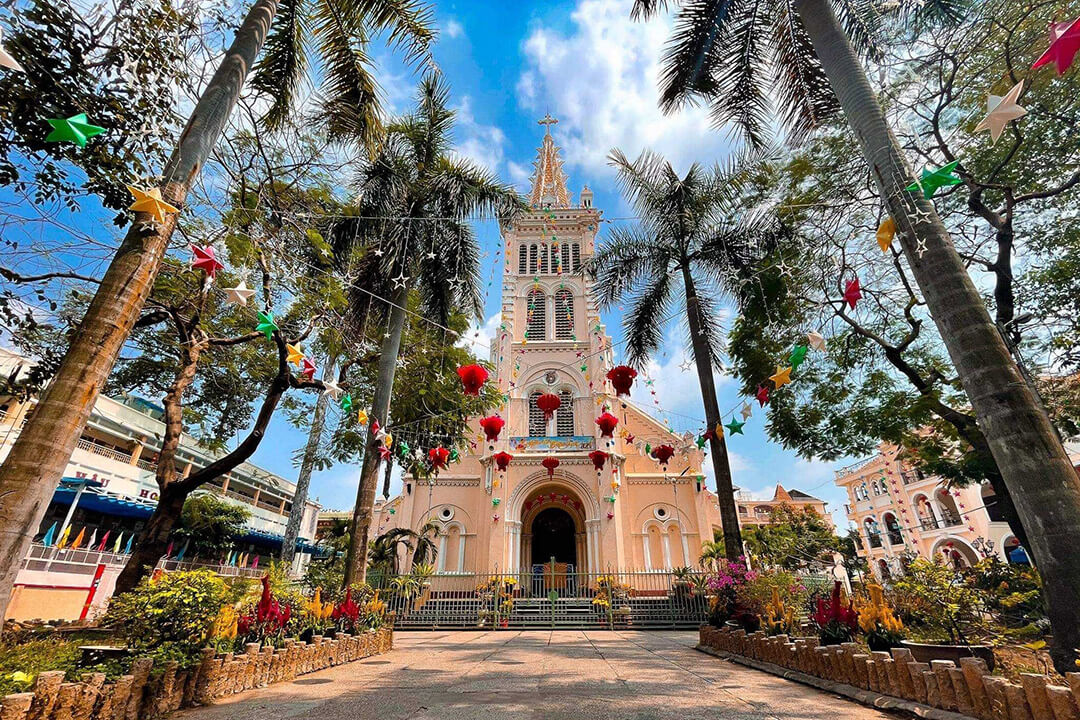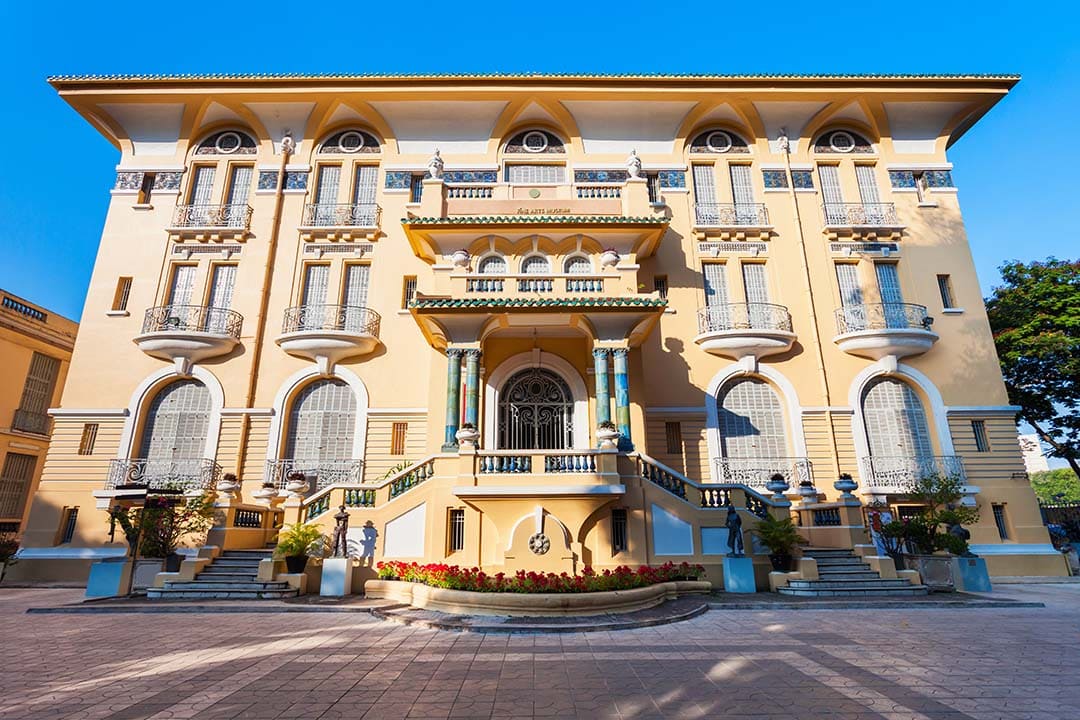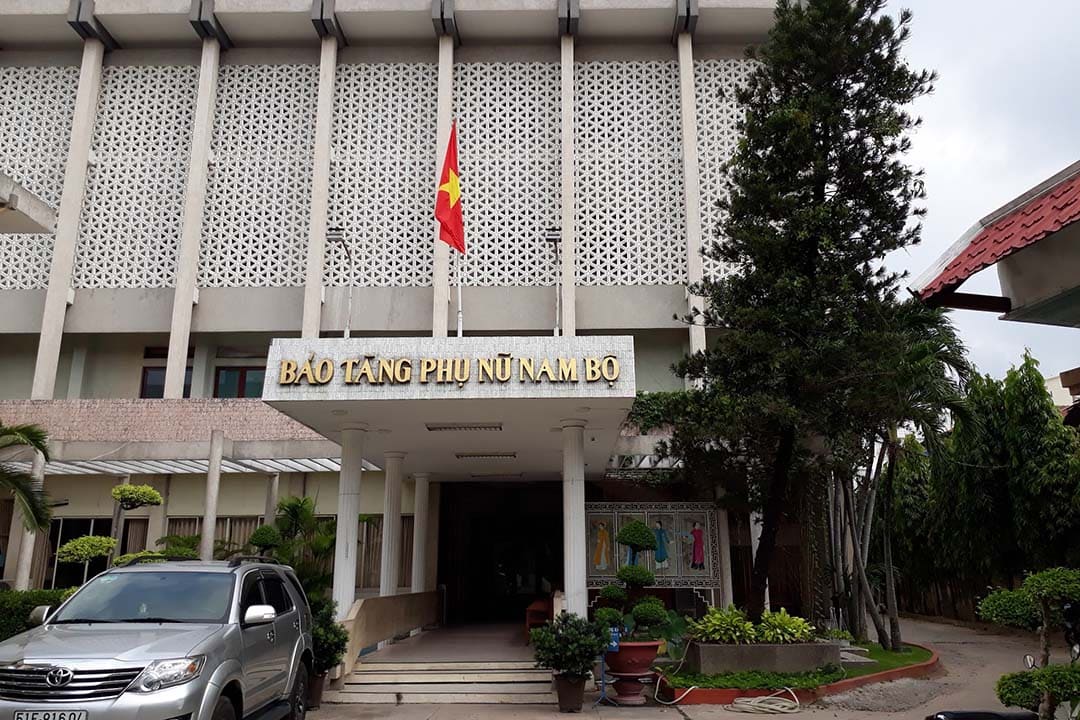Nov - 03 - 2025
The Museum of Traditional Vietnamese Medicine, also known as the Fito Museum, offers a captivating journey through centuries of medical wisdom. It offers a stark yet fascinating contrast to the city's bustling markets and modern skyscrapers. While most tourist itineraries focus on well-trodden paths, this unique institution invites you to explore the intricate, fragrant, and deeply spiritual world of traditional remedies. This comprehensive GTrip guide is the only resource you’ll need to navigate this cultural gem. We’ll walk you through every floor, reveal the stories behind the most captivating exhibits, and provide all the practical tips you need for a seamless and enriching visit into the heart of Vietnamese history.
Overview of the Museum of Traditional Vietnamese Medicine
- Address: 41 Hoang Du Khuong Street, Hoa Hung Ward (Ward 12, District 10), Ho Chi Minh City
- Opening hours: 8:30 AM to 5:00 PM
- Entrance fee:
- Adults: 180,000 VND/person
- Students/Elderly people: 90,000 VND/person
- Parking: Free of charge
The Fito Museum stands as a landmark achievement, proudly holding the title of the first and most comprehensive private museum of its kind in Vietnam. Established with a profound passion for preservation, its core purpose is to protect, honor, and showcase the invaluable legacy of traditional Vietnamese medicine. Every artifact and display within its walls tells a piece of a story that spans thousands of years.
Founded by the vision and passion of Mr. Le Khac Tam, Chairman of Fito Pharma, the Fito Museum was created to preserve Vietnam’s precious heritage and honor the legacy of traditional medicine. To Mr. Tam, traditional healing is not only a medical practice but also a reflection of the nation’s enduring cultural identity. Officially opened in 2007 after three years of construction, the museum spans nearly 600 square meters across seven floors. They feature 18 exhibition rooms designed in traditional Vietnamese architecture with wood as the main material. A visit to a Fito Museum feels like traveling back in time, offering a captivating journey through the evolution of Vietnamese medicine.

The Museum of Traditional Vietnamese Medicine, also known as the Fito Museum, showcases the legacy of traditional medicine
Unique architectural features of the Fito Museum
Right when accessing the museum, the peaceful and familiar scene of two bamboo groves at the entrance draws the visitors’ attention. The museum's architecture is a stunning fusion of traditional Vietnamese design elements and meticulous craftsmanship. They guide your journey across its six floors, with each level offering a unique and immersive experience.
First floor - Reception and introduction area
Your journey begins on the ground floor, a welcoming space where you purchase your tickets and are introduced to the world you are about to explore. The air here is subtly fragrant with the scent of dried herbs, a gentle precursor to the sensory experience ahead. This floor serves as an orientation hub, featuring two key areas designed to set the stage for your visit. The first is a comfortable screening room, while the second is a delightful souvenir shop where the experience truly begins. Here, the aroma of medicinal herbs is omnipresent, and visitors can savor complimentary herbal tea, a warm and soothing introduction to the flavors of traditional medicine.
- Screening room: Accommodates up to 50 guests per session, this room shows the documentary A Century of Healthcare Experience. The film provides essential context and is available in Vietnamese and English, with subtitles in German, Russian, and French, making it accessible to a global audience.
- Souvenir shop: Before or after your tour, you can enjoy a complimentary tasting of aromatic herbal tea. The shop offers a beautifully curated selection of high-quality oriental medicine products. They include various herbal teas, potent tonic wines, organic shampoos and body washes, and other wellness items you can take home as a meaningful memento.
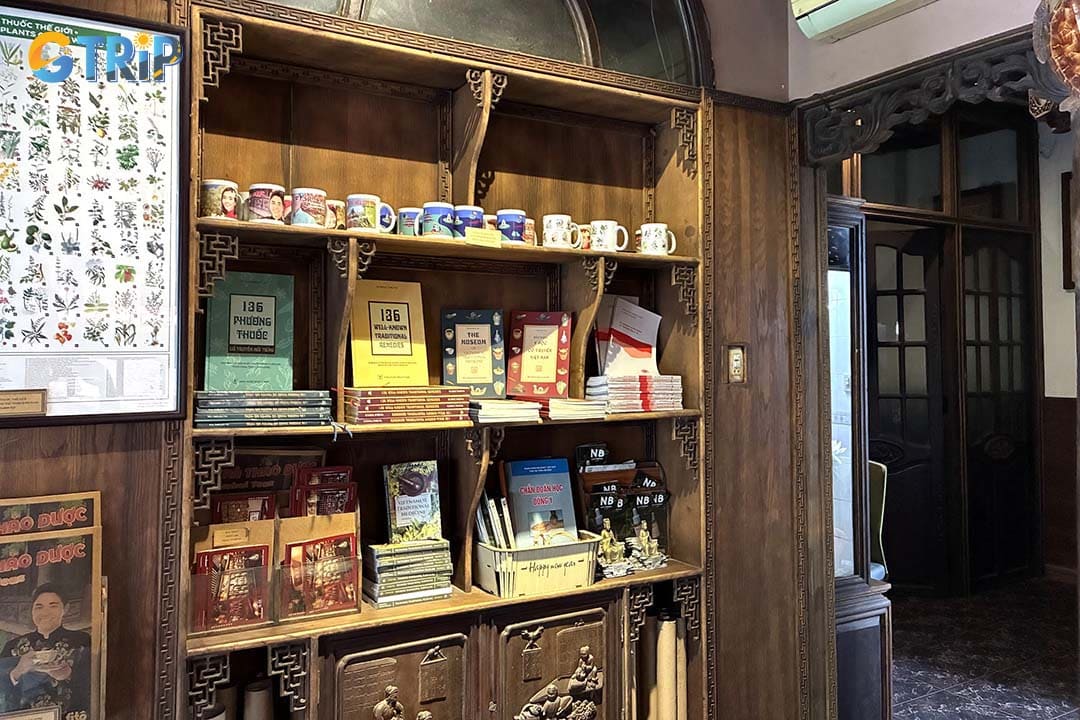
The first floor features two main areas: a cozy screening room and a charming souvenir shop
Second floor - Exhibition of traditional medical tools
Ascending to the second floor, you step into a world of ancient apothecaries. This level is dedicated to the tools and instruments used by physicians in centuries past, offering a tangible connection to their practice. The intricate craftsmanship and ingenuity of these artifacts are remarkable, from delicate scales used for measuring precious ingredients to various implements for preparing remedies. The centerpiece of this floor is a stunning, detailed model of an imperial medical institute. This display is a portal into the royal court, vividly recreating the dedicated healthcare center that served Vietnam's emperors and their families, showcasing the high esteem in which medicine was held.
Imperial medical institute model: This meticulously crafted recreation depicts the royal healthcare bureau. It provides insight into the organized system of medicine that existed to serve the Nguyen Dynasty emperors and the royal court, highlighting the sophistication of historical Vietnamese healthcare.
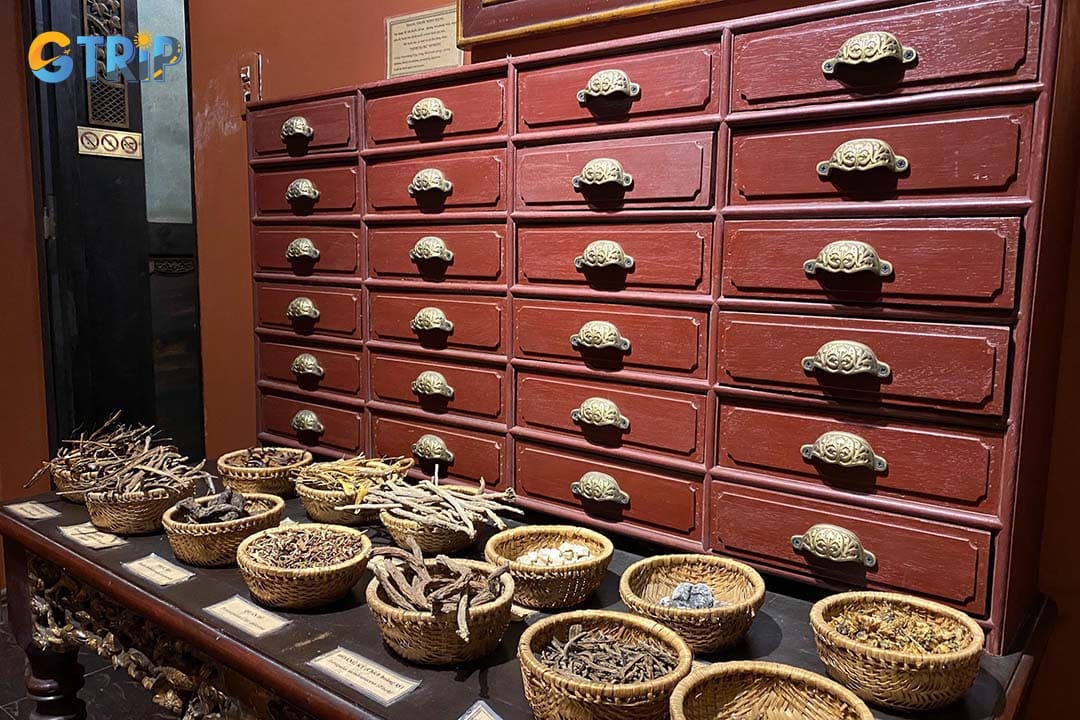
Imperial medical institute model is a detailed recreation showcasing the royal medical system that served the Nguyen emperors
Third floor - Traditional pharmacy and herbal displays
The third floor immerses you completely in the atmosphere of a classic traditional pharmacy. The space is filled with the earthy scent of wood and herbs, lined with antique cabinets and displays that evoke a bygone era. This floor is a treasure trove of historical collections, each telling a story of the art and science of medicine. The beautiful mother-of-pearl paintings are particularly captivating, illustrating the entire process of healing. The sheer variety of herbal wine jars, some dating back nearly two millennia, speaks to the long and rich history of this healing tradition in Vietnam.
- Collection of teapots and mother-of-pearl paintings: These exquisite artworks depict vivid scenes of traditional medical practices. They include herbal gathering, medicine preparation, pulse diagnosis, and the careful process of writing prescriptions.
- Scales and grinding tools: A fascinating collection of mortars, pestles, and intricate weighing scales from the late 19th century showcases the precision required in traditional pharmacy work.
- Medicine decoction pots: A diverse collection of ceramic and terracotta pots, gathered from provinces across Vietnam, used for the slow, careful process of brewing medicinal decoctions.
- Herbal wine jars: This impressive collection features vessels of varying shapes, materials, and historical periods, with some pieces dating from the 1st-3rd centuries all the way to the 20th century.
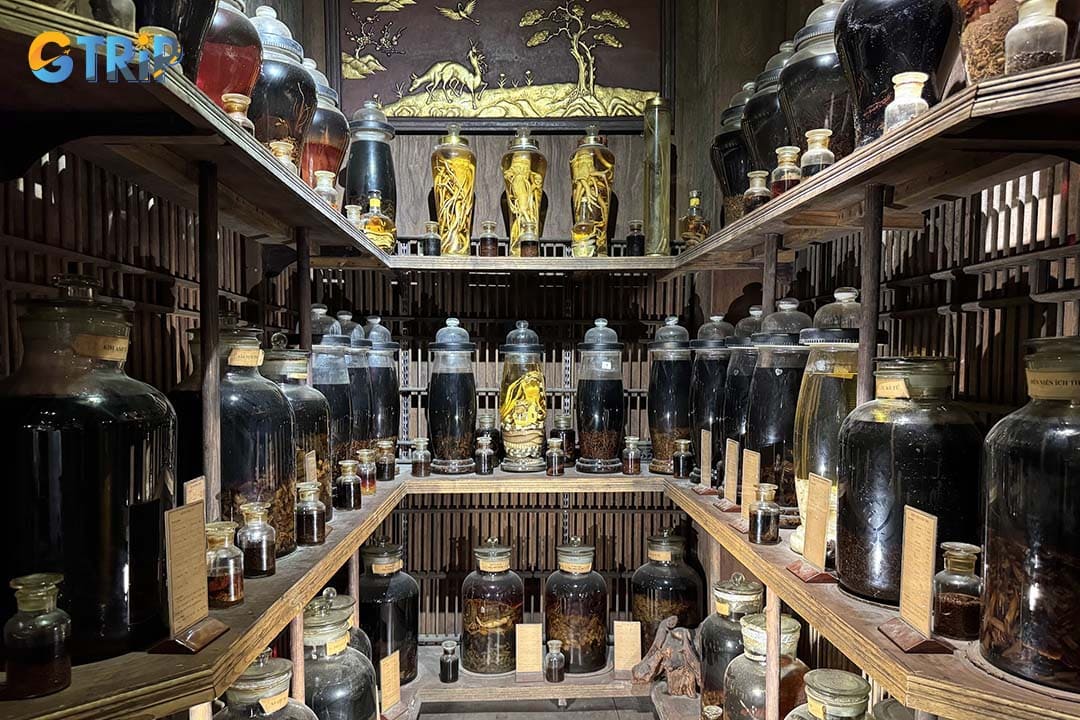
A diverse collection of vessels from the 1st to the 20th century, showcasing Vietnam’s long tradition of herbal medicine
Fourth floor - Medicinal preparation techniques
If the third floor showed you the pharmacy, the fourth floor reveals the science and artistry behind what happens within it. This area is an educational deep dive into the "how-to" of traditional medicine, illustrating the meticulous processes of transforming raw ingredients into potent remedies. The displays are designed to be both informative and engaging, providing a hands-on sense of the labor involved. You can see historical processing tools that were once used to slice, grind, and prepare thousands of different herbs. The centerpiece is an authentic pharmacy model from the 19th century, complete with its original wooden cabinets and counters, making you feel as though a physician might appear at any moment.
- Vietnamese materia medica: An extensive library of over 300 real specimens of plants, animals, and minerals used in medicine, accompanied by nearly 2,000 beautifully illustrated depictions of medicinal herbs.
- Processing tools: Authentic crescent knives, grinding boats, mortars, and pestles offer a glimpse into the physical labor and skill required to prepare traditional medicines.
- 19th-century herbal pharmacy model: This life-sized reconstruction features antique wooden cabinets and counters, providing a realistic look into a pharmacy of the past.
- Collection of wine jars: This display highlights the ancient practice of infusing medicinal liquor, especially focusing on the unique “buried jar” technique used to age and preserve the wine for maximum quality and potency.
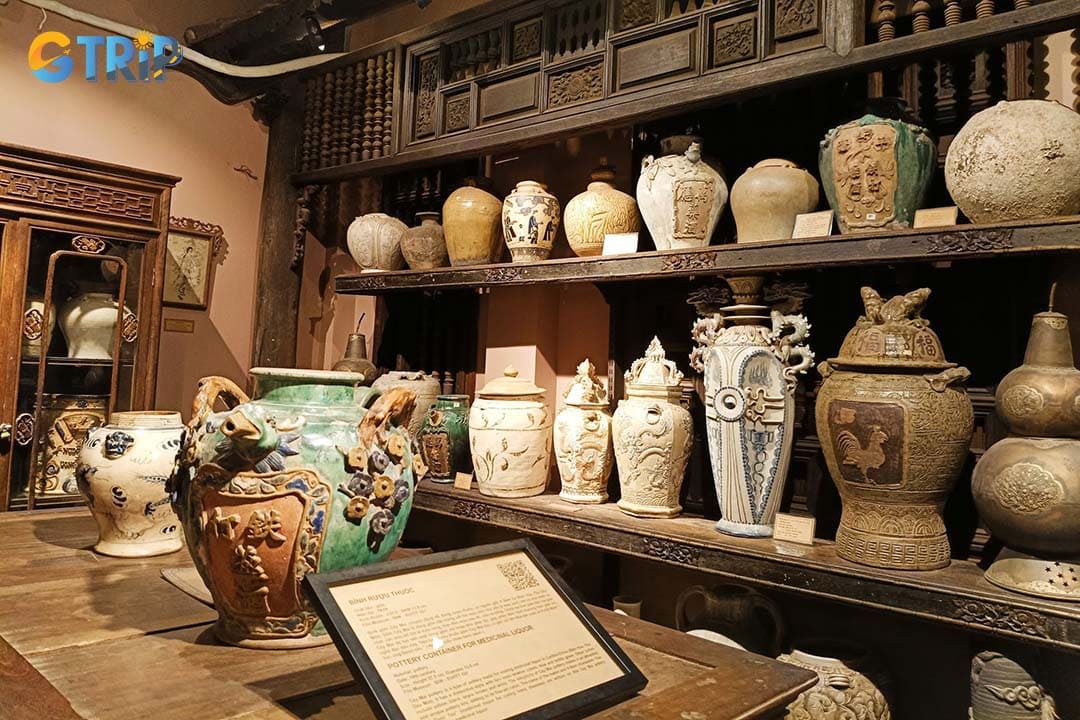
Collection of wine jars showcases the traditional art of brewing medicinal liquor, featuring the unique “buried jar” technique used to enhance its flavor and potency
Fifth floor - Historical documents and artifacts
The fifth floor is the intellectual and spiritual heart of the Fito Museum. This space is dedicated to the pioneers and foundational knowledge of Vietnamese medicine, celebrating the great minds who shaped its history. The atmosphere here is one of reverence and respect. Dominating the room is a grand altar dedicated to the two most revered figures in Vietnamese traditional medicine: Tue Tinh and Hai Thuong Lan Ong. At the center of the floor stands the magnificent "Tree of Vietnamese traditional medicine". It is a masterful wooden carving that serves as a hall of fame, listing the names of 100 eminent physicians and their most important literary works, symbolizing the deep-rooted and ever-growing nature of this field.
- Chronology of Vietnamese traditional medicine: A detailed timeline highlights the key milestones, discoveries, and influential periods in the development of Vietnamese healing arts.
- Altar of medical ancestors: A solemn and beautiful altar paying homage to the two founding fathers of Vietnamese medicine: Tue Tinh (14th century) and Hai Thuong Lan Ong Le Huu Trac (18th century).
- Prehistoric medical artifacts: A fascinating collection of ancient stone and bronze tools provides evidence of medical practices dating back thousands of years.
- “Tree of Vietnamese traditional medicine”: This unique carved wooden artwork symbolically lists 100 of the most eminent physicians in Vietnamese history, alongside their notable books and contributions to the field.
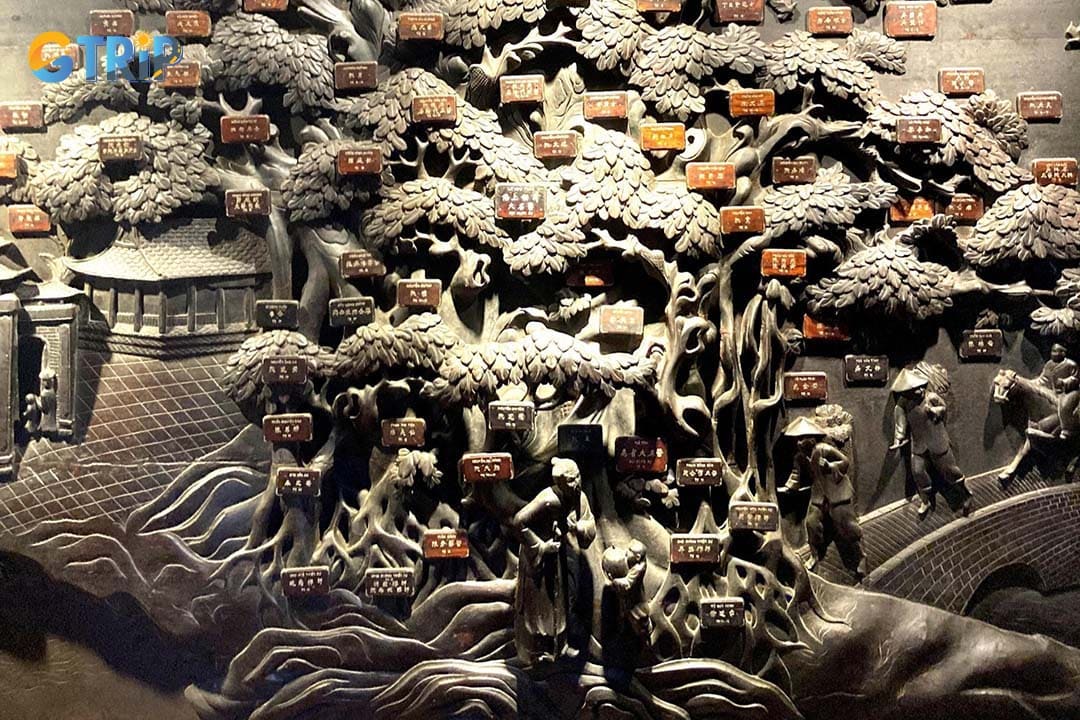
“Tree of Vietnamese Traditional Medicine” is an intricate wooden carving that honors 100 renowned physicians in Vietnamese history
Sixth floor - Film screening and research library
The final floor of the museum is a serene and contemplative space designed for reflection and deeper learning. The sixth floor combines art, architecture, and knowledge in a harmonious blend, offering a place to absorb everything you’ve seen. The architecture features a unique Cham-style tower that beautifully integrates influences from Northern Vietnam, the imperial city of Hue, and the ancient Cham culture. Golden lacquered portraits of distinguished physicians line the walls, giving a face to the names seen on the floor below. This level also serves as a research area, providing a quiet corner to learn more about the shared heritage of traditional medicine across Asia.
- Golden lacquered portraits: This gallery features 15 stunning, hand-painted portraits depicting distinguished physicians from the 13th to the 19th centuries, rendered in traditional Vietnamese lacquer style.
- Cham-style tower: A unique architectural feature that combines stylistic elements from Northern Vietnam, the former imperial capital of Hue, and the ancient Cham civilization.
- Eastern medicine heritage: The library offers valuable insights into the interconnected histories of Chinese, Vietnamese, Korean, and Japanese traditional medicine, showcasing both shared principles and unique developments.
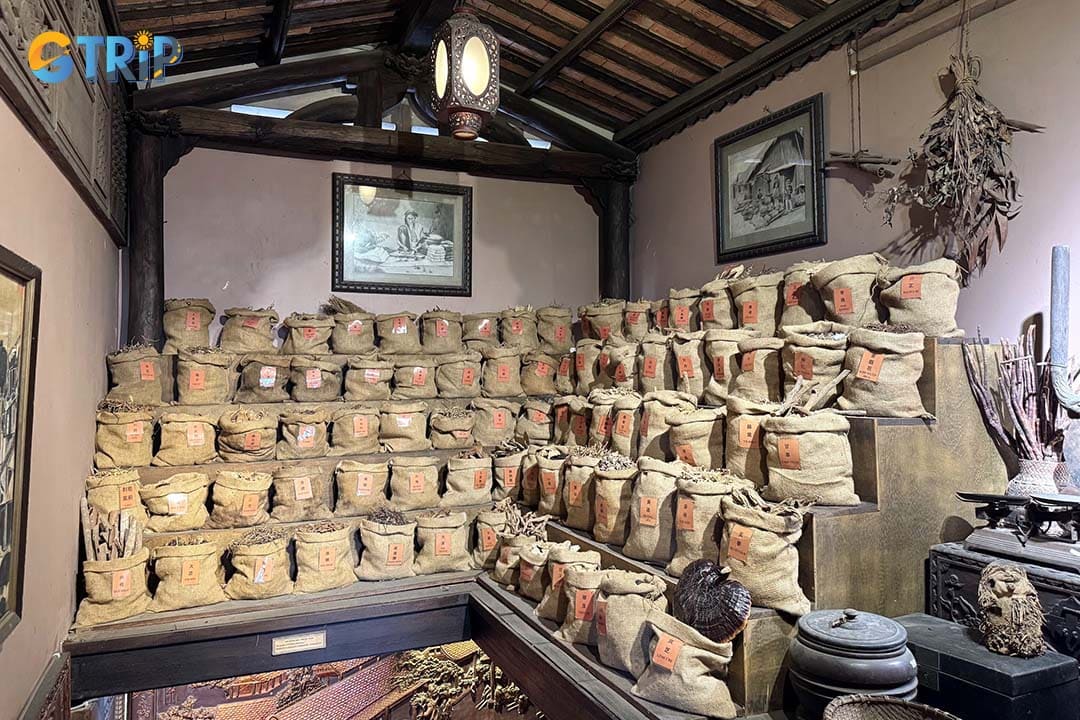
This library explores the intertwined histories of Chinese, Vietnamese, Korean, and Japanese traditional medicine
How to get to the Museum of Traditional Vietnamese Medicine
The museum is located in Hoa Hung Ward, a short journey from the city center. Here are the easiest ways to get there:
- Ride-hailing app: This is the most convenient and popular option for tourists. A car or motorbike ride from central locations like the Ben Thanh Market area will take approximately 15-25 minutes, depending on traffic. Simply enter "Fito Museum" or its address into the app.
- Taxi: Taxis are readily available throughout the city. Reputable companies like Vinasun and Mai Linh are reliable choices. The journey time and cost will be similar to using a ride-hailing app.
- Public bus: For a more local and budget-friendly experience, you can take a public bus. Several routes pass near the museum. Check a local bus app like BusMap for the best route from your location. This option will take longer but is very affordable.
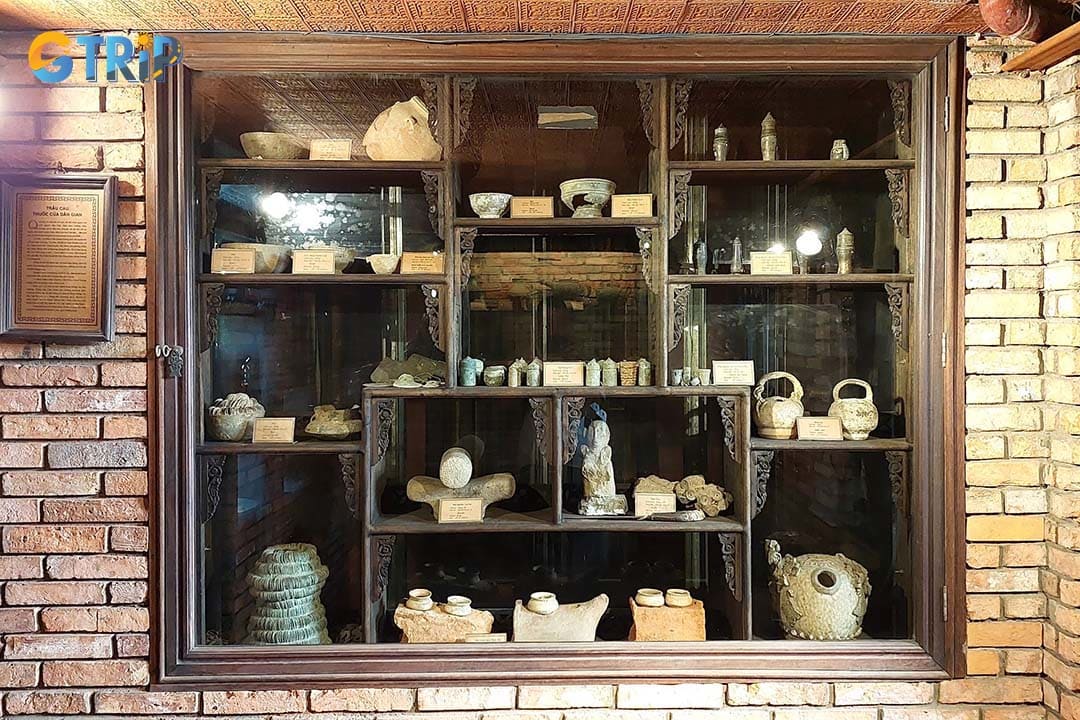
There are many ways to get to the Museum of Traditional Vietnamese Medicine (Fito Museum) that you can consider
Nearby attractions to the Museum of Traditional Vietnamese Medicine
You can easily combine your visit to the Fito Museum with other fascinating sights in and around Hoa Hung Ward. Make a half-day or full-day trip by including these nearby spots:
- Tao Dan Park: Just a short drive away, this lush urban oasis is one of Ho Chi Minh City's most beautiful parks. It's the perfect place for a relaxing stroll under shady trees and to observe local life, such as morning tai chi sessions or afternoon chess games.
- Ho Thi Ky Flower Market: Experience a vibrant explosion of color and fragrance at the city’s largest wholesale flower market. This bustling, 24/7 market is a photographer's dream and offers a lively, authentic slice of Saigon culture.
- Vietnamese National Buddhist Temple (Viet Nam Quoc Tu): This prominent and stunningly beautiful pagoda is a symbol of modern Vietnamese Buddhism. Its impressive 13-story tower and serene atmosphere provide a peaceful contrast to the city's energy.
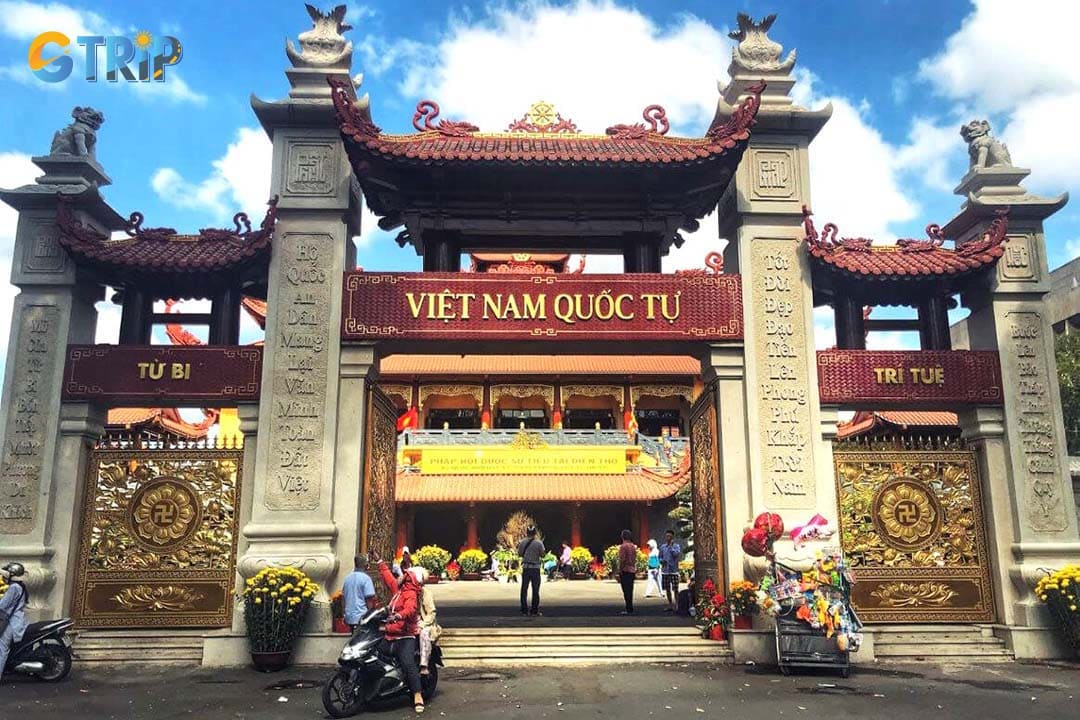
You can visit a nearby Vietnamese National Buddhist Temple for a more amazing experience
Practical tips for visitors
To make the most of your visit to the Museum of Traditional Vietnamese Medicine, keep these simple tips in mind:
- Visit in the morning to avoid crowds: The museum is quieter shortly after opening, allowing you to explore the exhibits at your own pace and enjoy the serene atmosphere. The morning light is also better for photography.
- Allocate 1-2 hours to explore all six floors: While the museum isn't massive, each floor is packed with intricate details. Rushing through means you’ll miss the fascinating stories behind the artifacts.
- Photography is allowed in most sections: Feel free to take photos to capture your experience, but remember to be mindful of other visitors and avoid using a flash, which can damage the delicate artifacts.
- Don’t miss the herbal tea tasting at the souvenir shop: It's a complimentary and delightful part of the experience. Taking a moment to savor the warm, fragrant tea is a perfect way to connect with the flavors of traditional medicine firsthand.
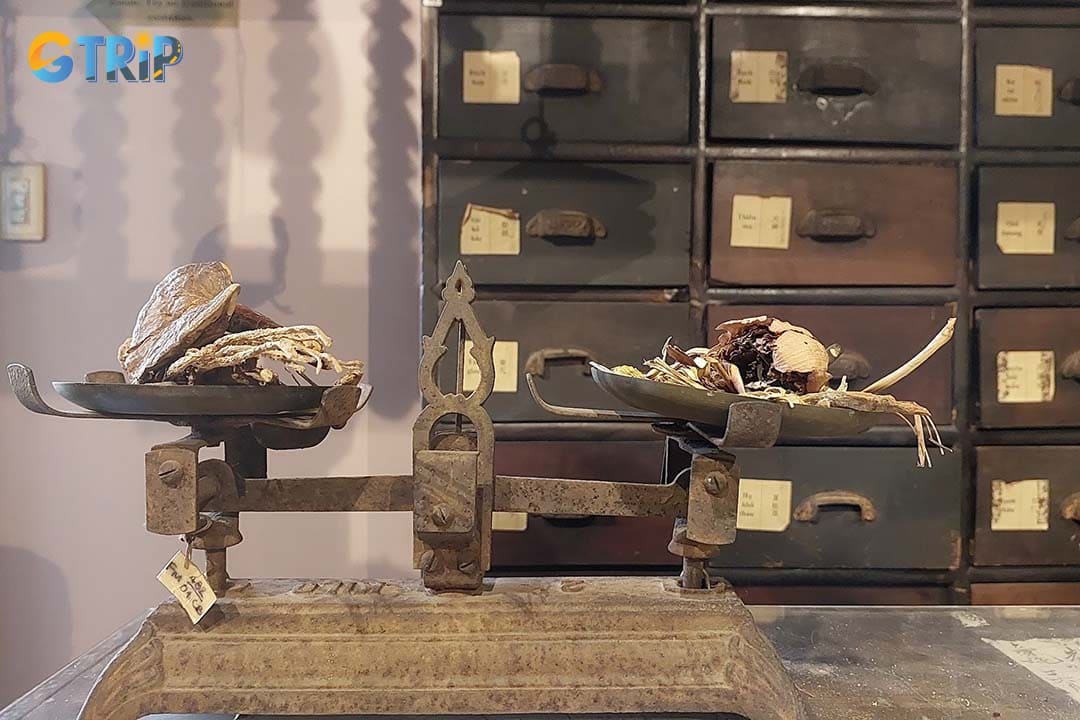
Remember to capture your experience
The Museum of Traditional Vietnamese Medicine is far more than just a collection of old objects. It's a living storybook of Vietnam’s enduring cultural and intellectual heritage. For any traveler in Ho Chi Minh City with a curiosity for history, culture, or simply a desire for a unique and thoughtful experience, a visit to the Fito Museum is an absolute must. It offers a peaceful, educational, and profoundly beautiful glimpse into the soul of Vietnamese wellness traditions. Let GTrip be your guide to the most authentic and unforgettable experiences the country has to offer.

